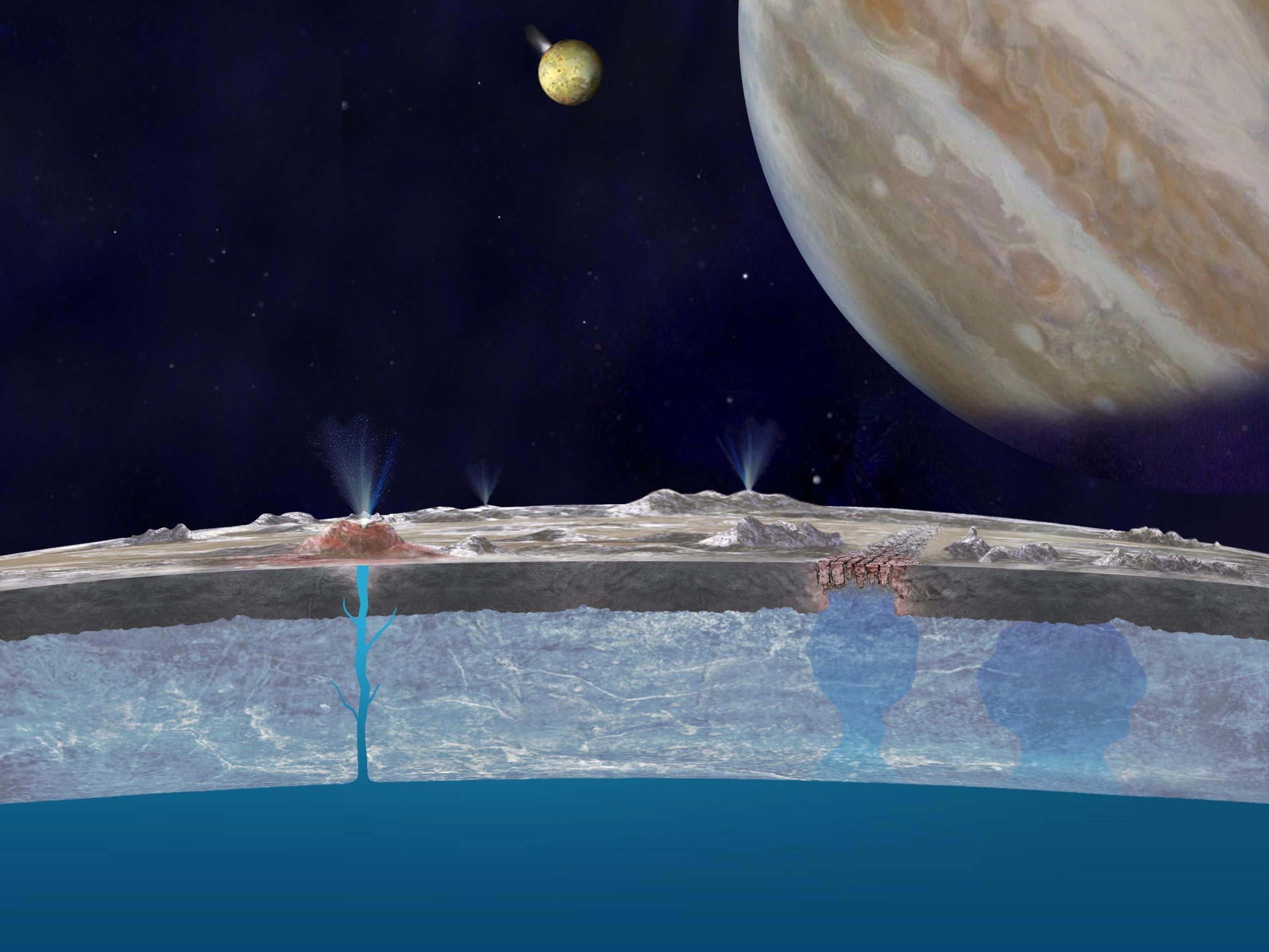
The descent probe of
the Galileo spacecraft in December 1995 entered the atmosphere of Jupiter. The probe worked in the atmosphere for about an hour, dropping to a depth of 130 kilometers. This immersion gave science a lot of data that is used now. As it turned out, the outer layer of clouds is characterized by low temperature - about -80 degrees Celsius and a pressure of 1.6 atmospheres. But at a depth of 130 kilometers the pressure is already 24 atmospheres, with a temperature of +150 degrees Celsius. Clouds of water vapor, then scientists have not found.
In 2003, the Galileo machine itself plunged into the atmosphere of a giant planet. But this was done not only in the interests of science. In fact, it was suicide, with which the device was programmed in order to exclude the possibility of contamination of Jupiter’s satellites with terrestrial microorganisms. There was a far from zero chance that there were living microbes on the surface of the apparatus that survived the emptiness and coldness of outer space. If they hit a more or less favorable environment, they could multiply, coming into conflict with the alleged patterns of life on the satellites of the giant planet.
Since the end of Galileo, the Hubble Space Telescope has been observing Jupiter and its satellites. In some cases, he discovers signs of the existence of water geysers in Europe. Scientists believe that there are frequent breakthroughs in the ice crust of a planetoid with emissions of a column of water to an enormous height.
Upon learning of the existence of such a phenomenon, scientists became interested in what might be hiding under the ice of Europe. Since there is liquid water there, it means that the temperature of the medium is quite comfortable for the existence of living organisms, even microscopic ones. True, the power of ice in Europe is several kilometers, which greatly complicates the process of finding this life. The expedition to the planetoid cannot be called simple - it is being planned now, but the implementation of the project looks rather complicated.
In order to get more details about the conditions of Europe, scientists began to study the data collected by Galileo for eight years of being in the Jupiter system. During this time, the device circled Europe 11 times, and once the rendezvous was only a few hundred kilometers.
It happened on December 16, 1997, when the system was in E12 orbit. The distance to the surface of the satellite of Jupiter was only 206 kilometers, and the flight took place over the region, which was called Pwyll Crater. During the flight, the Galileo magnetometer will notice significant changes. Scientists believe that these changes are caused by the action of the geyser, which "dispersed" the plasma surrounding the satellite.
Specialists have created
two computer models , checking the situation with changes in plasma activity around Europe. One of the models provided for a geyser, the other was not. When checking both models, it turned out that it is the first model that is closest to the changes observed by scientists. This allowed us to consider the version with a geyser almost confirmed.
In any case, Europe is a very interesting object to study. The Clipper mission, which is to send a spacecraft filled with specialized equipment to Jupiter’s satellite, will start in 2022. And then scientists can get much more data about Europe.
About this mission on Geektimes
already wrote . Preparing for it will take several years, and it will cost several billion dollars. So much because the mass of the device will be 6 tons, so it will not work to bring it into space with the help of existing launch vehicles. This is either the SLS or the Falcon Heavy with the upgraded Centaur stage, which increases the payload of the rocket.
In addition to this mission, another is planned, which can be called
subglacial . Within the framework of the Icefin project, it is planned to create something like a submarine that is capable of communicating from under a multi-kilometer ice column. Now the robot is being tested in the Antarctic, where conditions are most similar to those that prevail in Europe. The preliminary tests went well.
“We saw that Icefin is very good at floating, using all the scientific tools provided, so that he was able to get data from three different locations. The robot acted on the shelf and relatively large depths (530 and 800 meters). He also learned the language of the Erebus Glacier, ”
said the project participants.
If the subgrid robot could study what is in the water of the ocean (oceans?) Of Europe, science would be enriched with a huge store of new knowledge.
Well, it all started with the discovery of geysers hitting vertically up from the huge cracks on the surface of the giant planet’s satellite.